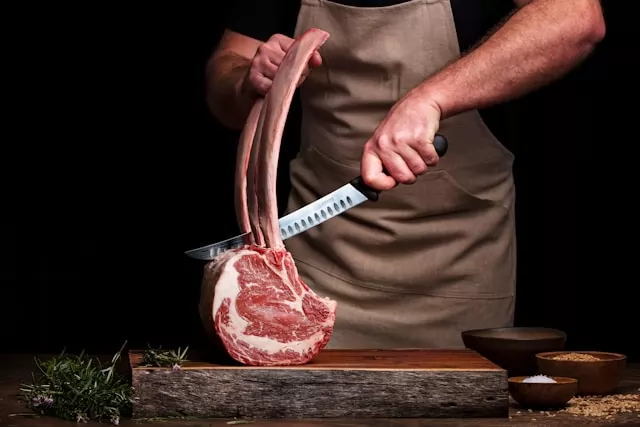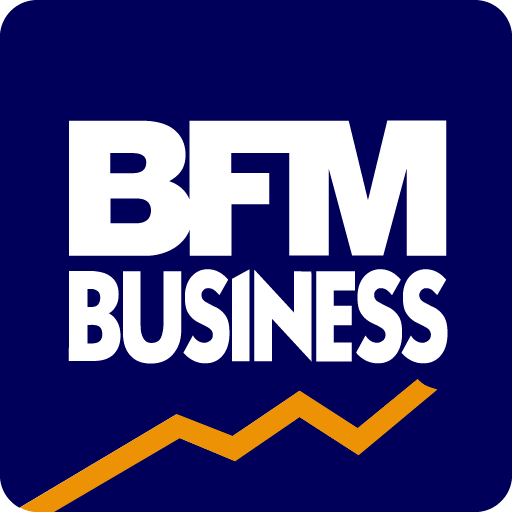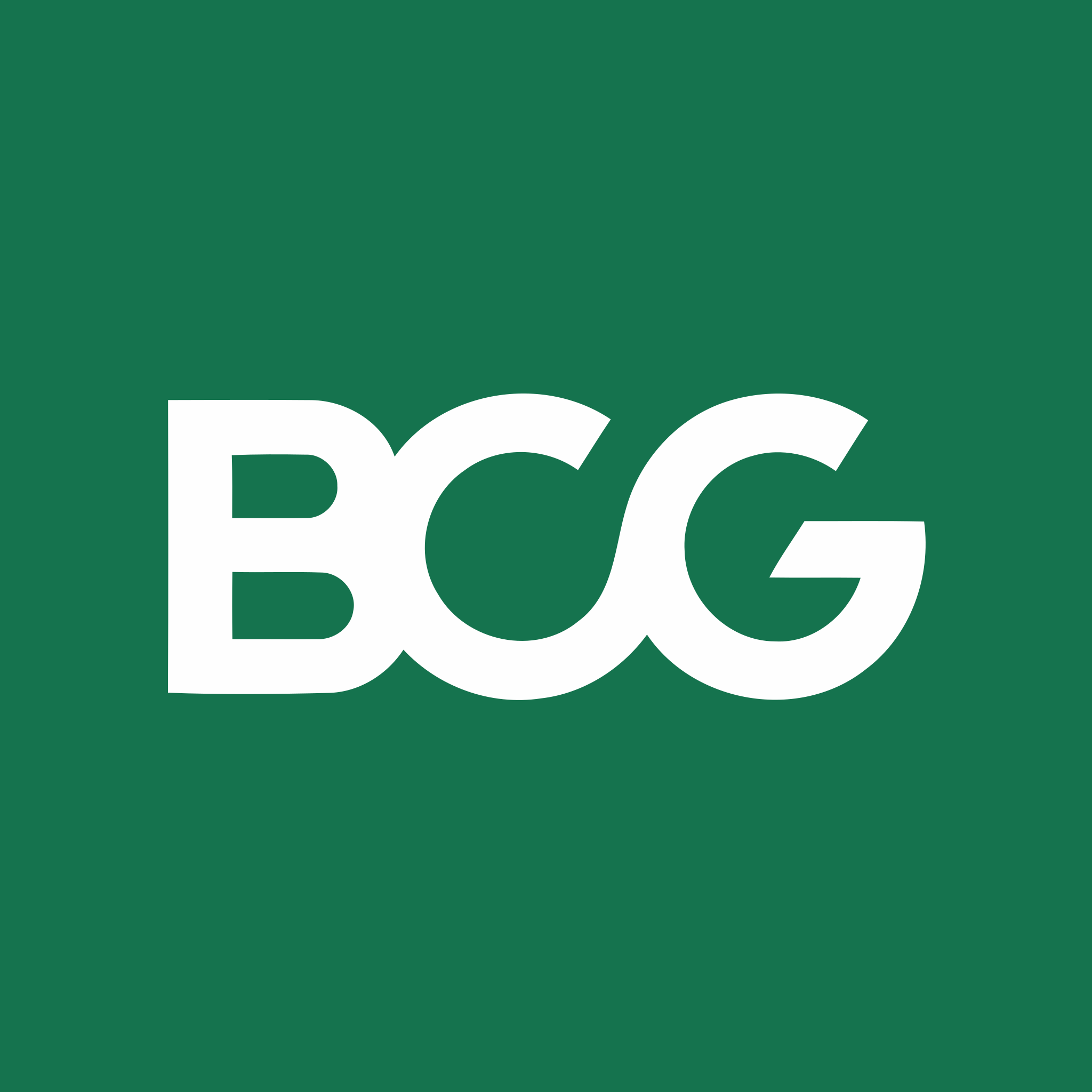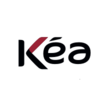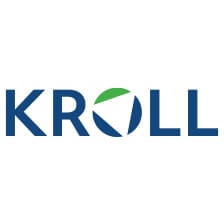Detailed content of our market study
 Inforamtion
Inforamtion
- Number of pages : 35 pages
- Format : Digital and PDF versions
- Last update :
 Summary and extracts
Summary and extracts
1 Market overview
1.1 Presentation and definition of the butcher's and delicatessen market
A butcher's shop is an establishment specializing in the retail sale of meat products and raw meats from cattle, pigs, poultry, sheep and goats. Butchers cut, prepare and sell these meats.
Charcuterie, on the other hand, specializes in the transformation of meat into various raw or cooked products, generally for immediate consumption or after a short preparation period. Charcuterie products include sausages, hams, pâtés and andouillettes. Butcher's shops and delicatessens are often combined into a single butcher's and delicatessen. Butchers and delicatessens can be attached to a market, integrated into a supermarket or completely independent.
The butcher's and delicatessen market involves several players, including abattoirs, independent butchers and charcutiers, and large butcher's and delicatessens. There are three main types of meat:
- Pork meats
- Beef
- Ovine meats
Globally, the meat products market is expected to grow significantly between 2013 and 2023, with a compound annual growth rate of 4.6%. Asia-Pacific and Europe are the two geographic regions leading this trend.
In France, the market is following the global trend. Butchery sales rose by 49% between 2015 and 2023, while deli sales increased by 12% over the same period, despite a gradual decline in the number of outlets between 2013 and 2023. In terms of the number of butchers, the Île-de-France region is in first place, with 1,666 outlets. Delicatessens, meanwhile, are most present in Nouvelle Aquitaine and Auvergne-Rhône-Alpes.
Despite this growth, total meat consumption has fallen significantly. This decline is mainly attributable to the rise in average selling prices for most meats and poultry, but also to the emergence of dietary rediets such as flexitarianism, which favours reduced meat consumption, and vegetarianism and veganism, which eliminate it altogether. In fact, by 2020, 20% of the French population considered themselves flexitarian, a trend motivated primarily by ethical reasons, but also by health concerns.
1.2 Global market
The global meat products market is showing sustained growth momentum. In ****, this market is valued at *,***.** billion dollars. Over the next ten years, the sector is expected to grow steadily, reaching nearly $*,*** billion by ****. This translates into a compound annual growth rate of *.*% between **** and ****, indicating a steady demand for meat products worldwide.
Market size for meat products World, **** - ****, in billions of dollars Source: ****
In ****, the geographical breakdown of the meat products market shows a clear difference between regions. Asia-Pacific is the clear leader, with almost **% of the market share, reflecting strong demand in this region where the population is dense and diets favor meat consumption. Europe follows with just over **%. North America takes third place with around **%, while Latin America, the Middle East and Africa capture *% and *% respectively, indicating developing markets.
Market share for meat products, by region World, ****, in Source: ****
The breakdown of the meat products market in ****, by meat source, shows a clear preference for pork, which accounts for almost **% of the market, closely followed by poultry at **%. These two categories largely dominate the market. Beef, with a market share of **%, remains a popular meat, although less dominant. Mutton, at *.**%, and other sources, at less than *%, occupy ...
1.3 Domestic market
Between **** and ****, butchery sales in France showed a steady upward trend. In ****, sales were €*.** billion and reached €*.** billion in ****, an increase of almost **% over this period. Growth was particularly marked between **** and ****, due to the effects of the COVID-** pandemic, as the French preferred to source their meat from nearby butchers.
trend in butchery sales France, **** - ****, in billions of euros Source: ****
Between **** and ****, charcuterie sales in France remained relatively stable. During this period, sales rose by around **%. After a slight decline in ****, sales picked up again, reaching their highest level in ****.
charcuterie sales trend France, **** - ****, in billions of euros Source: ****
1.4 Balance of trade
Beef exports
In ****, French beef exports showed an overall downward trend compared to ****. Italy remained the main market with a volume of **,*** carcass equivalent tons, but recorded a *.*% decrease. Germany and the Netherlands recorded declines of *.*% and **.*% respectively. Notable exceptions include Greece and Portugal, where exports rose slightly.
evolution of beef exports, including veal France, **** - ****, in tonnes of carcass equivalent (***) Source: ****
Market shares of exporting countries France, ****, in Source: ****
In ****, French beef imports showed mixed variations compared with ****. Major import sources such as the Netherlands, Ireland and Germany recorded declines of *.*%, *.*% and *.*% respectively. Poland saw its exports fall by **%, while Italy saw a notable decline of *.*%. By contrast, Belgium and Spain saw increases of *.*% and *.*% respectively. Austria also increased its exports to France by **.*%.
Imports Market share of importing countries France, ****, in Source: ****
Sheepmeat:
Between **** and ****, sheepmeat exports to France increased overall. Germany recorded the biggest increase, up **.*%. Belgium saw its imports rise slightly by *.*%, from **,*** to **,*** tce, as did Italy, from *,*** to *,*** tce. The Low Countries also saw a significant rise of **.*%, while exports to Portugal jumped by **.*%. Austria saw a marginal rise of *.*%, while Spain saw an increase of **.*%, from *** to *** tce. conversely, exports to Denmark fell by ...
2 Demand analysis
2.1 Demand on a downward trend
Since ****, meat consumption in France has seen a gradual but significant decline. In fact, over the last two decades, consumption of meat from large cattle, sheep, goats and pigs has shown a steady downward trend, reflecting inflation, but also the changing diets of some French people. Poultry, however, is an exception to this trend, recording a steady increase in consumption.
Individual meat consumption France, **** - **** - ****, as % of total consumption Source: ****
Meat from slaughter animals
Between **** and ****, meat animal consumption in France declined across all categories. Beef and pork each recorded a *.*% drop, reaching *,*** thousand tonnes carcass equivalent and *,*** thousand tce respectively in ****. Sheep meat consumption fell by *.*% to *** thousand tce, while horse and goat meat saw sharper declines of *.*% and **.*%, with each consuming * thousand tce in ****. These figures reflect a general downward trend in meat consumption in France.
Meat consumption from slaughter animals France, ****, in thousand tons carcass equivalent Source: ****
meat consumption trends for slaughter animals France, **** - ****, as % of total meat consumption Source: ****
Poultry and rabbit
Between **** and ****, poultry and rabbit consumption in France showed contrasting trends. Chicken consumption increased by *.*%, reaching a volume of *,**** thousand tonnes of carcass equivalent. By contrast, turkey consumption fell by *.*%, to *,*** thousand tce. ...
2.2 Demand segmentation
Consumers :
Source: ****
Although **% of French people say they eat meat at least once a week (***), the overall trend shows a slowdown in meat consumption. Indeed, fewer French people than in **** claim to eat meat on a daily basis, preferring to spread their consumption over the whole week.
How often the French believe they eat meat France, **** - ****, as % of population Source: ****
French preferences :
According to the Institut de l'élevage, the three types of meat most consumed by the French in **** are pork, poultry and beef/veal. Pork ranks first, with an average per capita consumption of **.* kg per year. It is closely followed by poultry, with a consumption of **.* kg. Beef and veal come third, with an average per capita consumption of **.* kg. These figures reveal that pork remains the most popular meat in France, although poultry, which is often perceived as a lighter option, is also widely consumed.
Meats most consumed by the French France, ****, in kg Source: ****
New consumer trends :
Healthy and organic food : meat consumers are emphasizing the growth of organic and local meats. They pay particular attention to farming methods and product origin, prompting butchers and delicatessens to offer options that are more in line with ...
2.3 The future of meat consumption in France
The two graphs below reveal a general downward trend in meat consumption, which increased between **** and ****. This trend is set to continue, with **% of French people planning to reduce their consumption even further over the next three years, while a majority prefer to maintain their current habits.
French people's level of meat consumption, according to them France, ****, in Source: ****
Future meat consumption estimated by the French France, **** - ****, as % of total meat consumption Source: ****
3 Market structure
3.1 The value chain
The butcher's market value chain can be broken down into several stages:
Animal breeding and production: this first stage covers all farming and rearing activities for animals destined for consumption Slaughtering: After rearing, animals are slaughtered in abattoirs to be transformed into meat products. Cutting: Once the animals have been slaughtered, their meat is cut into usable parts. These cuts can either be sold directly as pieces of meat, or further processed. Charcuterie processing : This stage involves the transformation of part of the cut meat into charcuterie and the preparation of products such as ham, sausages, etc. Here, meat is milked, seasoned and prepared in various forms. Distribution: meats and charcuterie are distributed to local butchers and delicatessens.
3.2 A declining number of butchers and delicatessens
Butchers
In ****, France had **,*** butcher shops. This number gradually declines to **,*** in ****, then **,*** in ****, indicating a weak recovery. However, the decline continues from **** and continues until ****, when there are **,*** butcheries. In ****, a slight increase is observed, with the number of butcher shops reaching **,***, followed by a further rise in **** to **,***, suggesting a temporary rebound due to the pandemic, which had encouraged households to source their meat from nearby butcher shops. However, once the health crisis had passed, the number of butcher shops fell again in **** to **,***, then to **,*** in ****, marking the sharpest decline of the decade.
number of butcher shops France, **** - **** Source: ****
The number of salaried butchers in France shows a general upward trend, despite some fluctuations. In ****, the number of salaried employees was **,***, rising steadily to **,*** in ****. After a slight drop in ****, the workforce rose again, peaking at **,*** in ****, the highest level of the period. Thereafter, the number of employees fell slightly to **,*** in ****.
evolution of butchery salaried employees France, **** - **** Source: ****
The geographical distribution of butcheries in France in **** shows a varied concentration by region. Île-de-France stands out with the highest number of butcheries, at *,***. The Auvergne-Rhône-Alpes region follows closely behind, while Occitanie boasts *,*** butcher shops. Other ...
3.3 Butchers and delicatessens lead distribution channels
Weight of distribution channels in sales of butchery products France, ****, in Source: ****
In ****, butchers and delicatessens accounted for the largest share of the butchery products distribution market, with **.*%. Hypermarkets follow closely with **.*%, and supermarkets contribute with **%. E-commerce accounts for a marginal *.*%. These figures show that, despite the rise of supermarkets, traditional butchers still play a dominant role in the distribution of butchered products in France.
4 Offer analysis
4.1 Offer typology
Product categories:
The butchers' and delicatessens' market is characterized by a diversity of products that can be classified into * categories:
Fresh meats this category includes red meats (***). Butchers generally offer products from local producers, guaranteeing high product quality and easy traceability, respecting the standards imposed by law. Charcuterie: this category includes processed products such as ham, sausage, terrines, etc. Prepared dishes: many butchers also offer ready-to-eat meals. Ancillary products: some butcheries - charcuterie - also offer complementary products such as marinades, spices and sometimes even cheeses and wine.
Rising prices:
Source: ****
In ****, the average purchase price of meat increased overall compared to ****. Poultry meat saw an average rise of *.*%, with notable increases for duck and processed poultry. As for butcher's meat, the average price rose by *.*%, with significant increases for grilling beef and leg of lamb. These increases reflect a general upward trend in prices, probably linked to inflation.
average purchase price trend France, **** - ****, in % (***) Source: ****
5 Regulations
5.1 Regulations
Health standards for meat:
Meat must comply with strict health standards throughout preparation, transport and sale:
Compulsory veterinary inspection before and after slaughter. Traceability of the entire process. Meat must come from an approved establishment.
Laboratory hygiene standards:
Hazard Analysis Control Point (***) training is mandatory for all professionals handling meat, to enable them to recognize and anticipate food hygiene hazards.
Display standards :
Allergens
Consumers must be informed of allergens contained in products, in accordance with the official list provided by government authorities. This requirement is particularly crucial for processed products and pre-prepared dishes.
Prices:
Legislation requires complete price transparency in establishments selling food products. Prices must be explicitly displayed, whether in physical stores or in markets. The total price, including all taxes, as well as the unit price (***) must be indicated. For sales in batches, the total and unit prices must also be clearly indicated. When the price cannot be established prior to the transaction, a clear and visible explanation of the calculation method must be provided.
Control standards for weighing devices :
Weighing devices must be positioned in such a way that customers can easily read the weighing results and, where applicable, the final price of the product. An official inspection ...
6 Positioning the players
6.1 Positioning the players
- Boucheries Nivernaises
- Bigard groupe
- Novoviande
- Jeusselin
- Boucheries Metzger
- Henri Boucher (Quality Meat Renmans)
- Despi Le Boucher
- La Boucherie - Baudelaire groupe
- Bouchers Services Groupe Codéviande
- Boucherie Orleanaise
- Charcuterie Morel
- CMO
- Combs Viande
- Crcm
- HF Ecrevolles
- IDF Athis Mons
- IDF Avrainville
- IDF Boissise
- IDF Bretigny
- IDF Coulommiers
- IDF Croissy
- IDF Fresnes
- IDF Herblay
- IDF Montigny
- IDF Noisiel
- IDF Orsay
- IDF Servon
- IDF Sous Bois
- Mevlana
- Sté de Commercialisation des Viandes (SCV)
All our studies are available online in PDF format
Take a look at an example of our research on another market!
 Choosing this study means :
Choosing this study means :
Access to more than 35 hours of work
Our studies are the result of over 35 hours of research and analysis. Using our studies allows you to devote more time and added value to your projects.
Benefit from 6 years' experience and over 1,500 industry reports already produced
Our expertise enables us to produce comprehensive studies in all sectors, including niche and emerging markets.
Our know-how and methodology enable us to produce reports that offer unique value for money.
Access to several thousand articles and paid-for data
Businesscoot has access to all the paid economic press as well as exclusive databases to carry out its market research (over 30,000 articles and private sources).
To enhance our research, our analysts also use web indicators (semrush, trends, etc.) to identify market trends and company strategies. (Consult our paying sources)
Guaranteed support after your purchase
A team dedicated to after-sales service, to guarantee you a high level of satisfaction. +44 238 097 0676
A digital format designed for our users
Not only do you have access to a PDF, but also to a digital version designed for our customers. This version gives you access to sources, data in Excel format and graphics. The content of the study can therefore be easily retrieved and adapted for your specific needs.
 Our offers :
Our offers :
The butcher's market | France
- What are the figures on the size and growth of the market?
- What is driving the growth of the market and its evolution?
- What is the positioning of companies in the value chain?
- Data from several dozen databases
Pack 5 études (-25%) France
- 5 études au prix de 74 €HT par étude à choisir parmi nos 1200 titres sur le catalogue
- Conservez -25% sur les études supplémentaires achetées
- Choisissez le remboursement des crédits non consommés au terme des 12 mois (durée du pack)
Consultez notre catalogue d’études sectorielles
